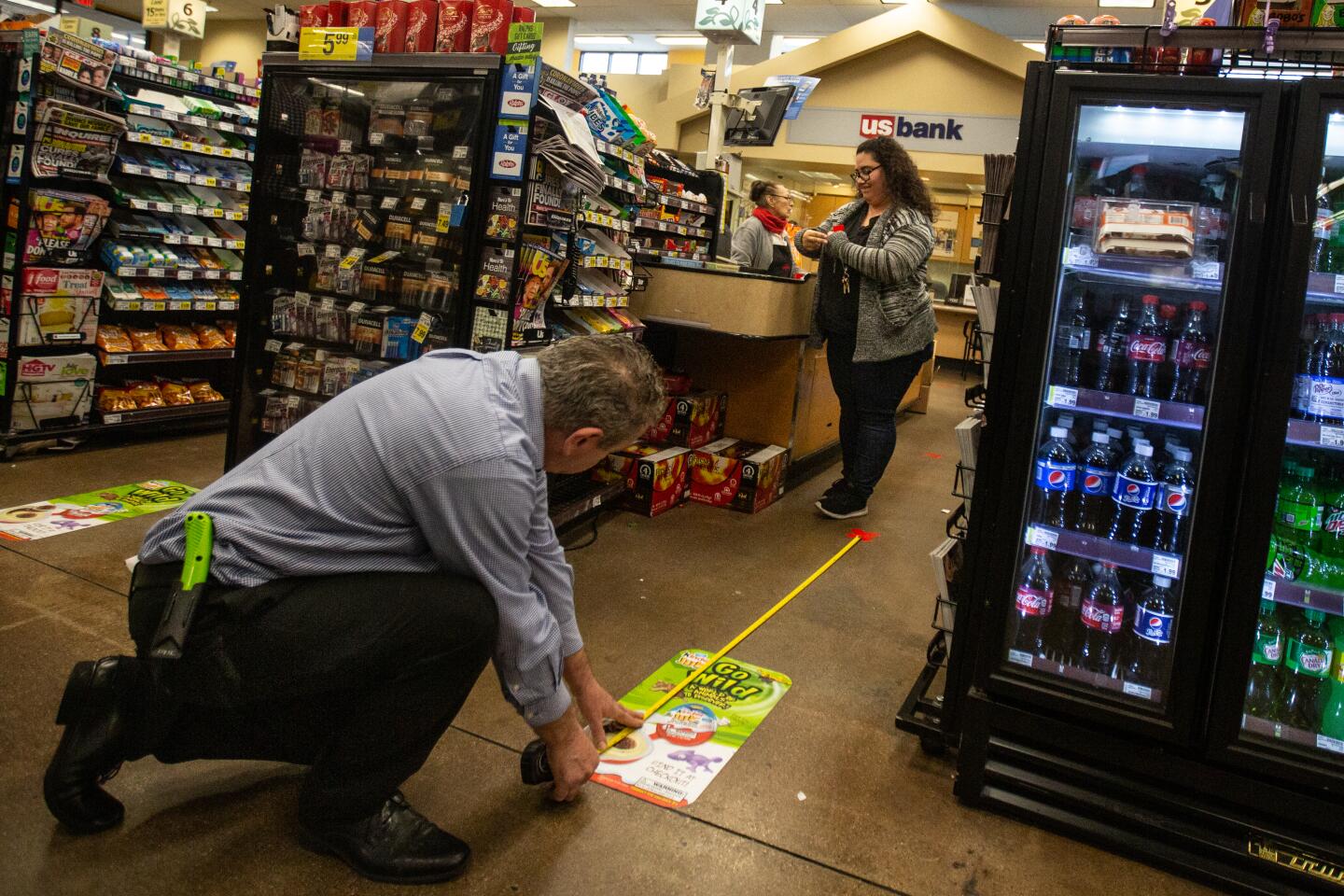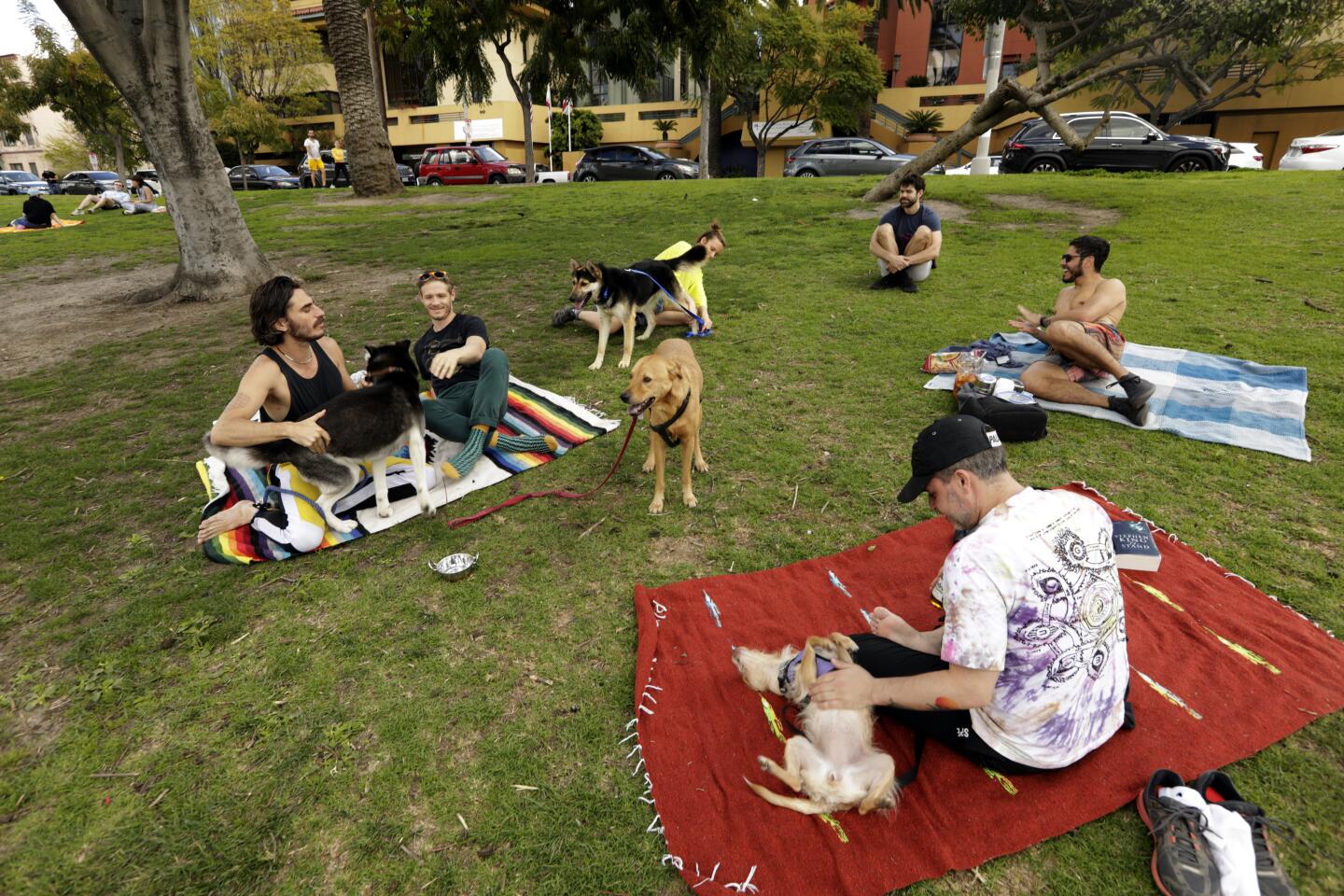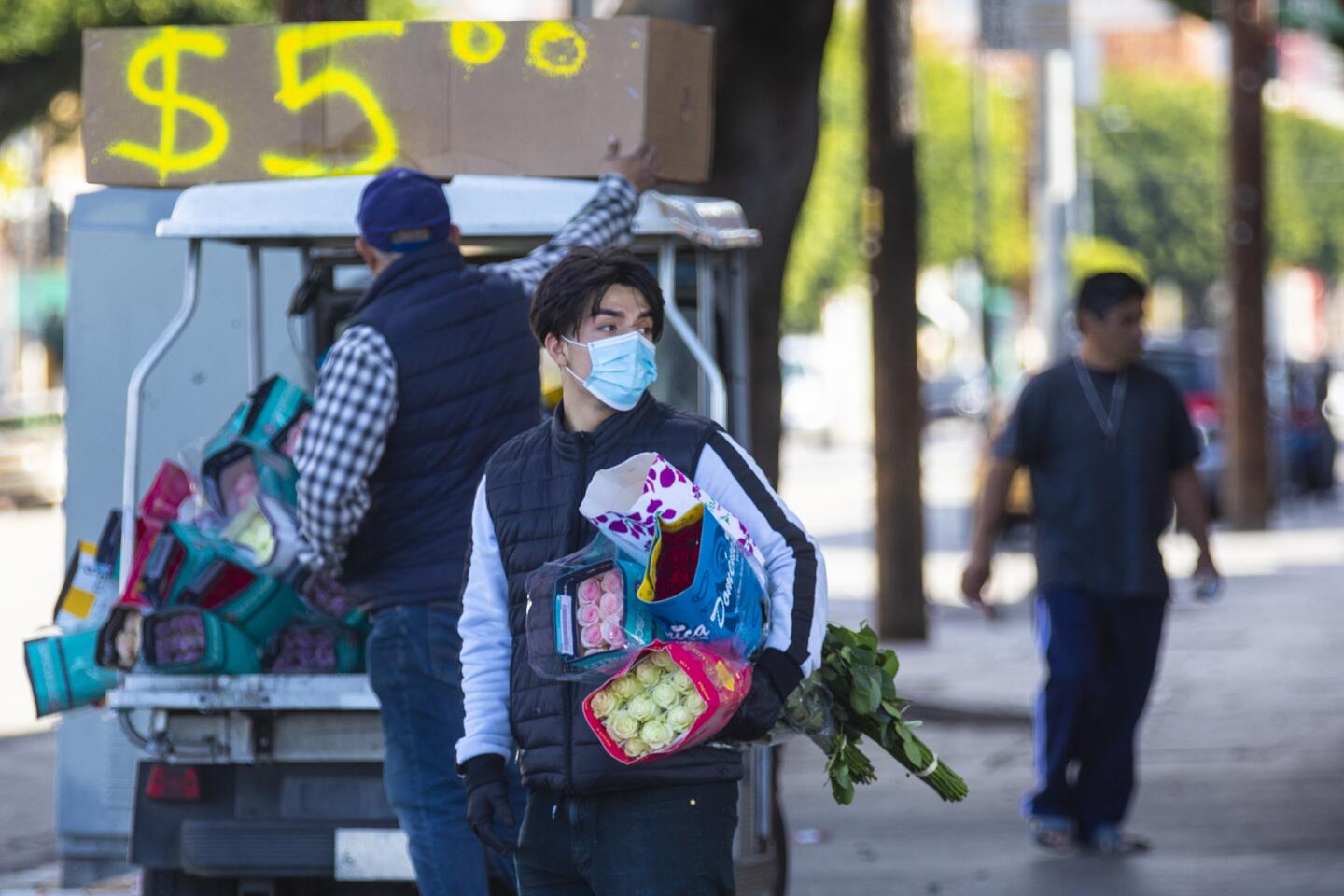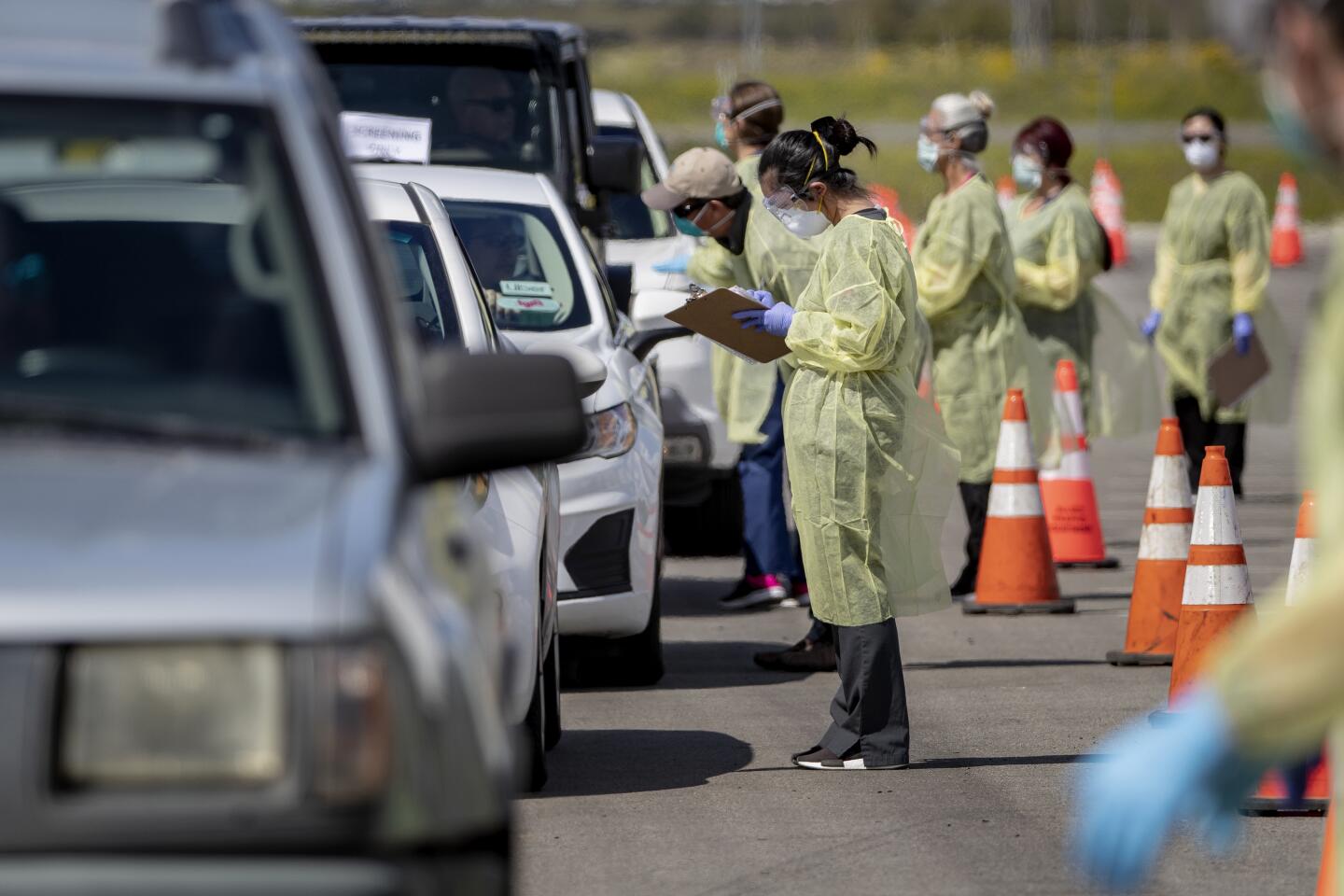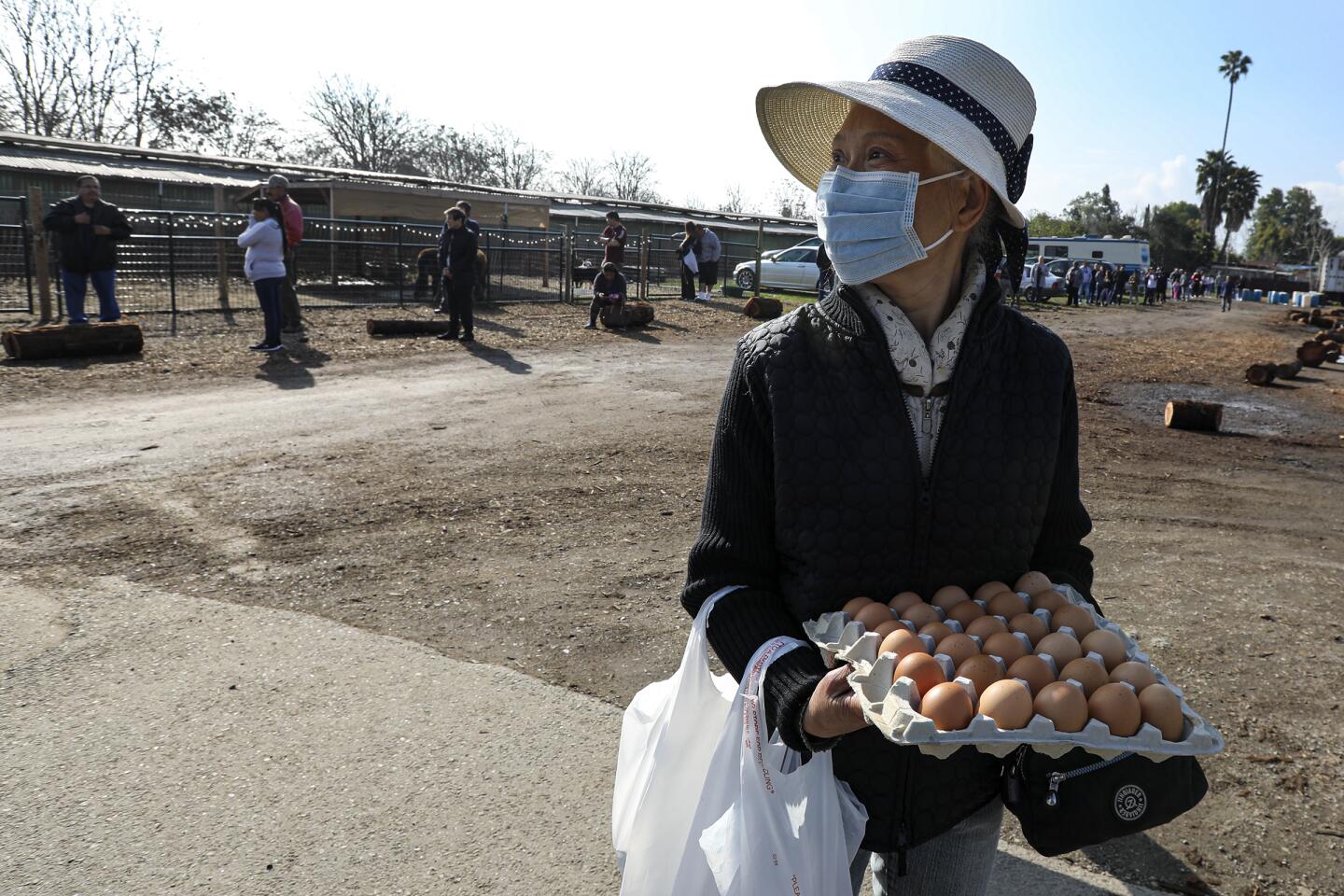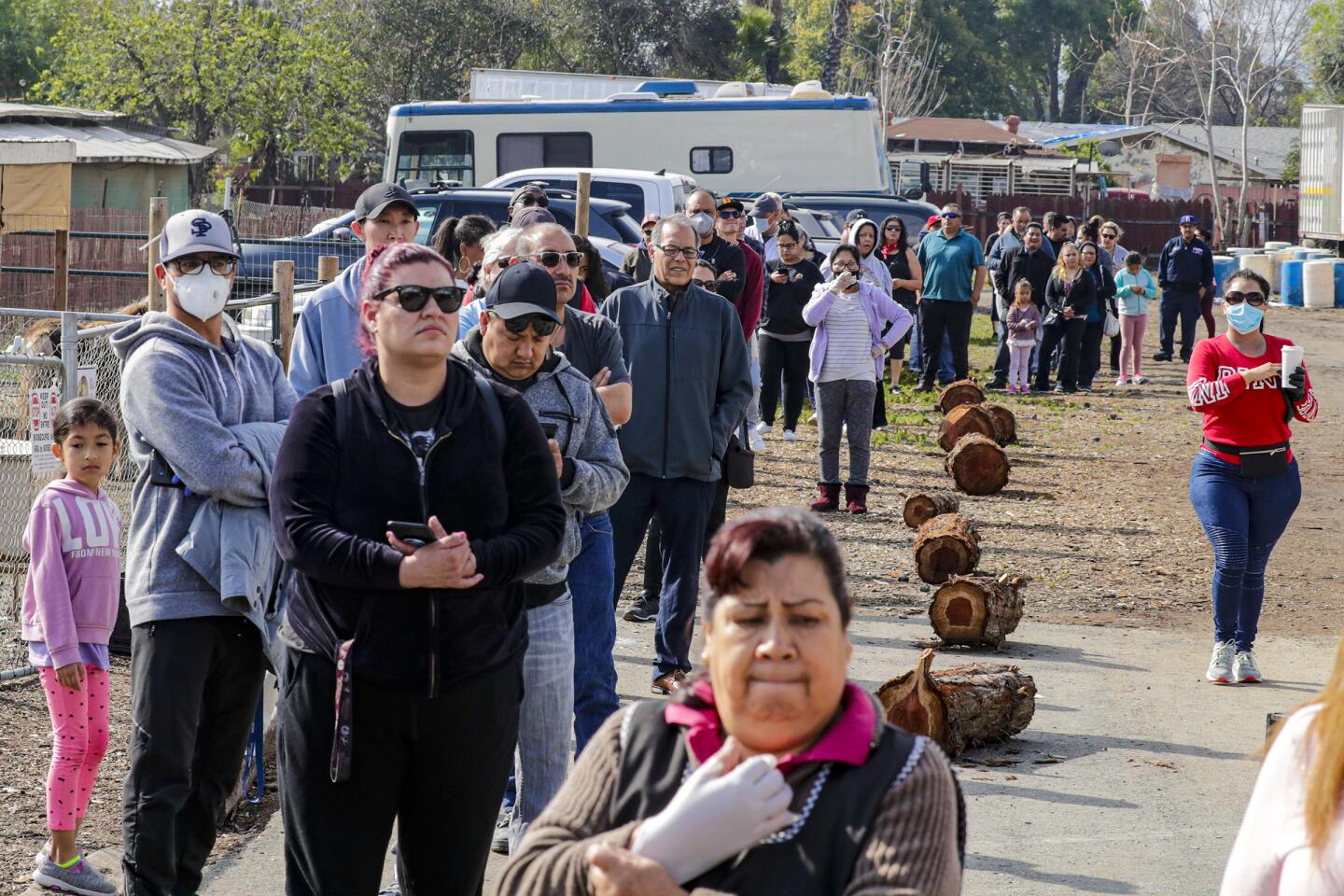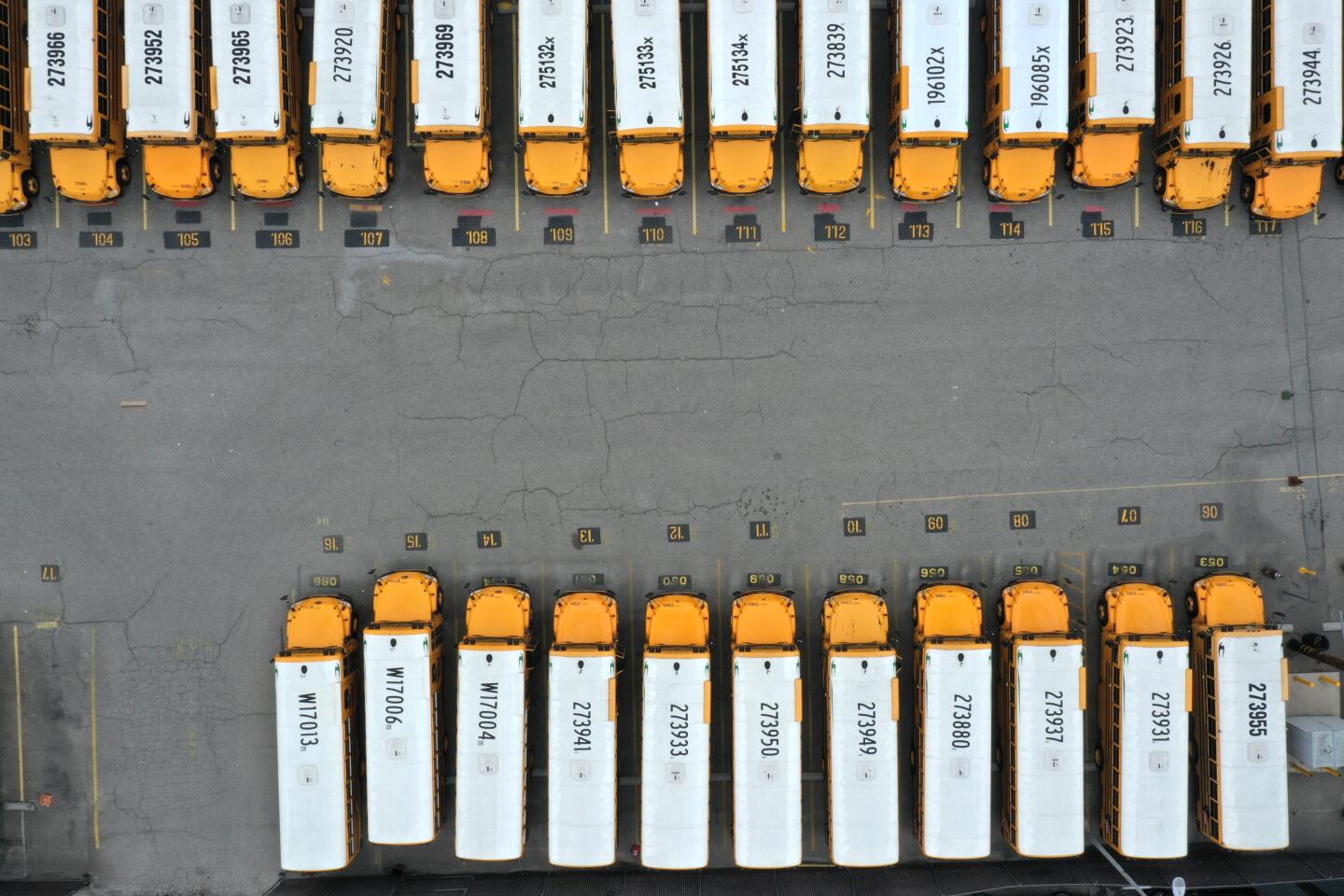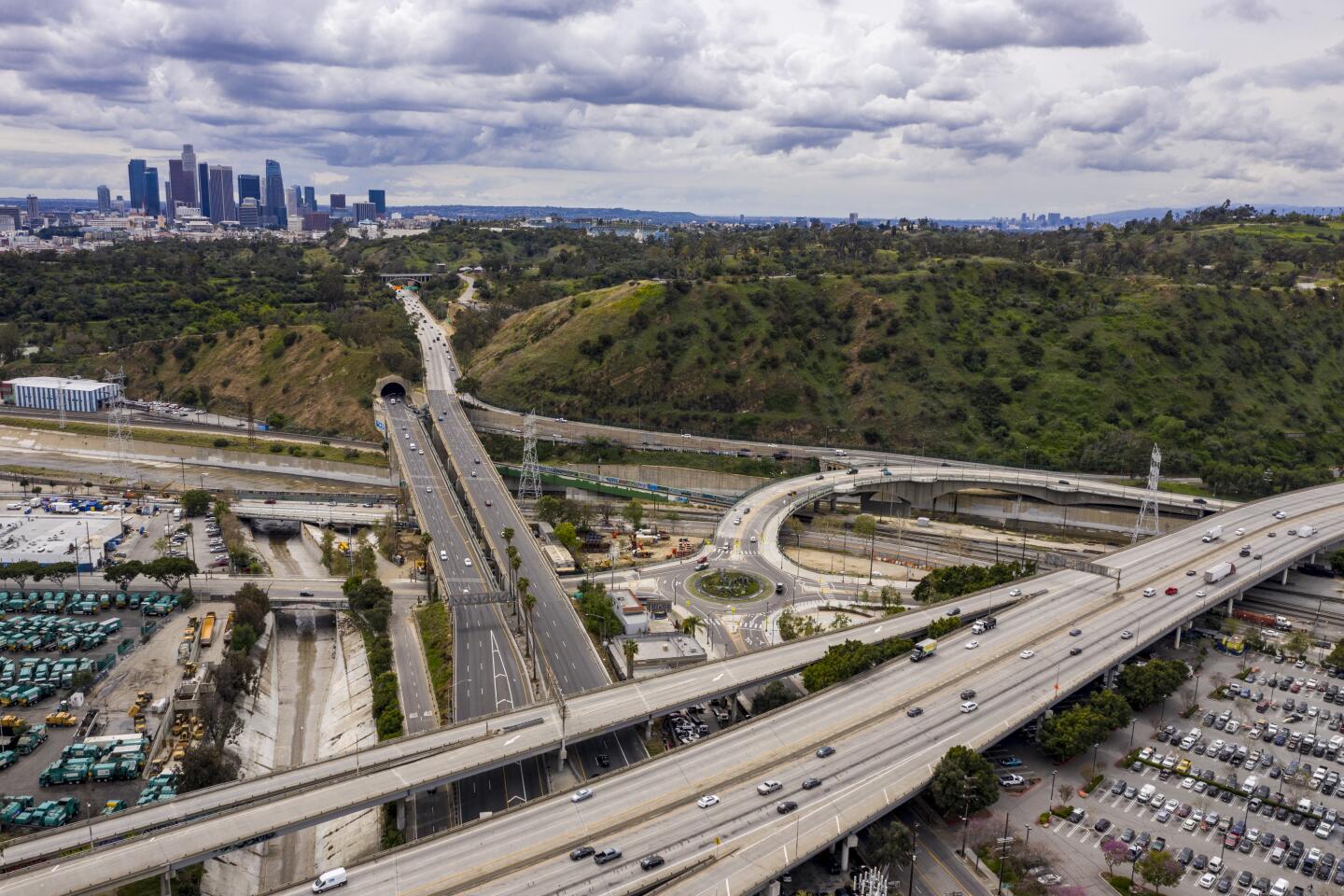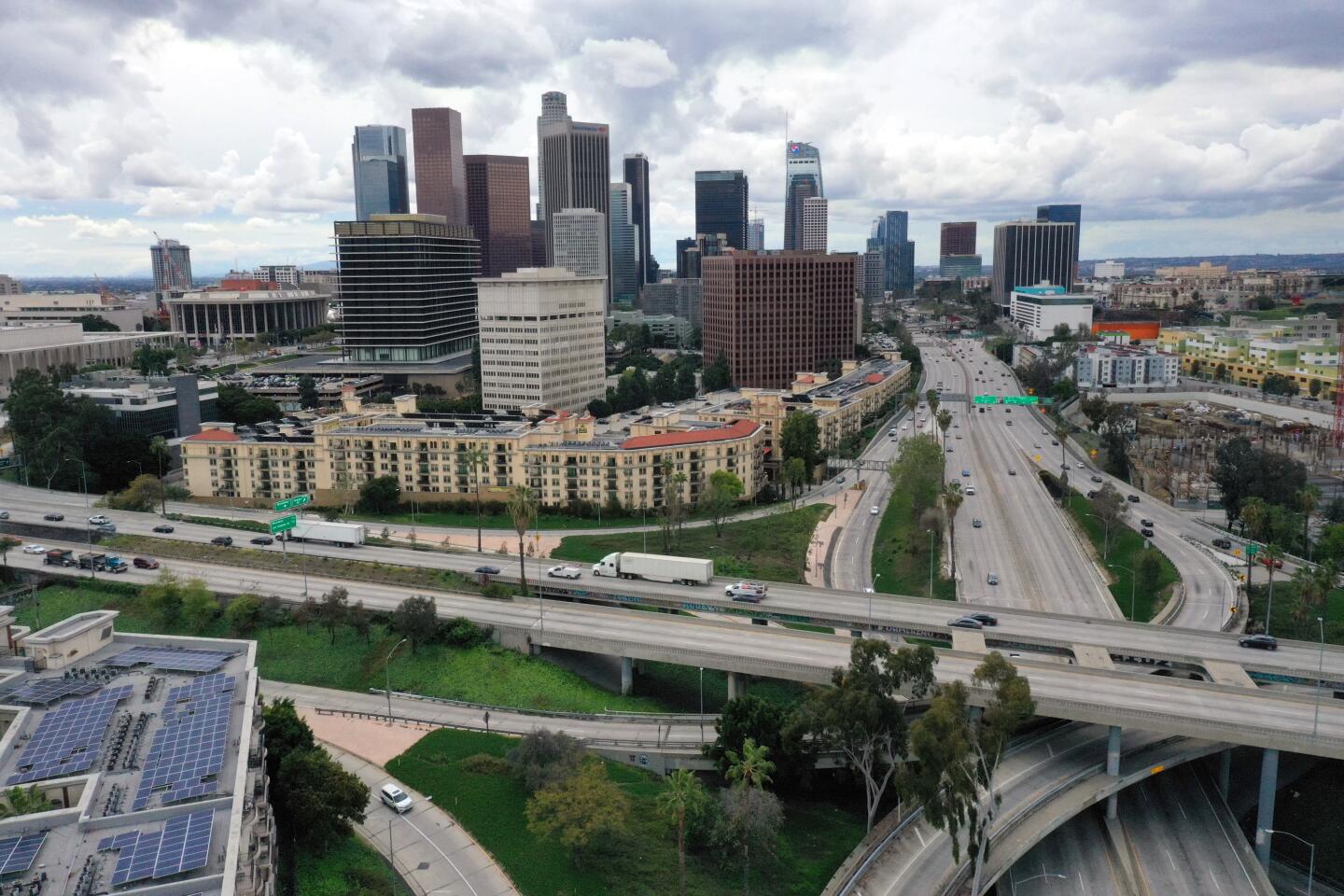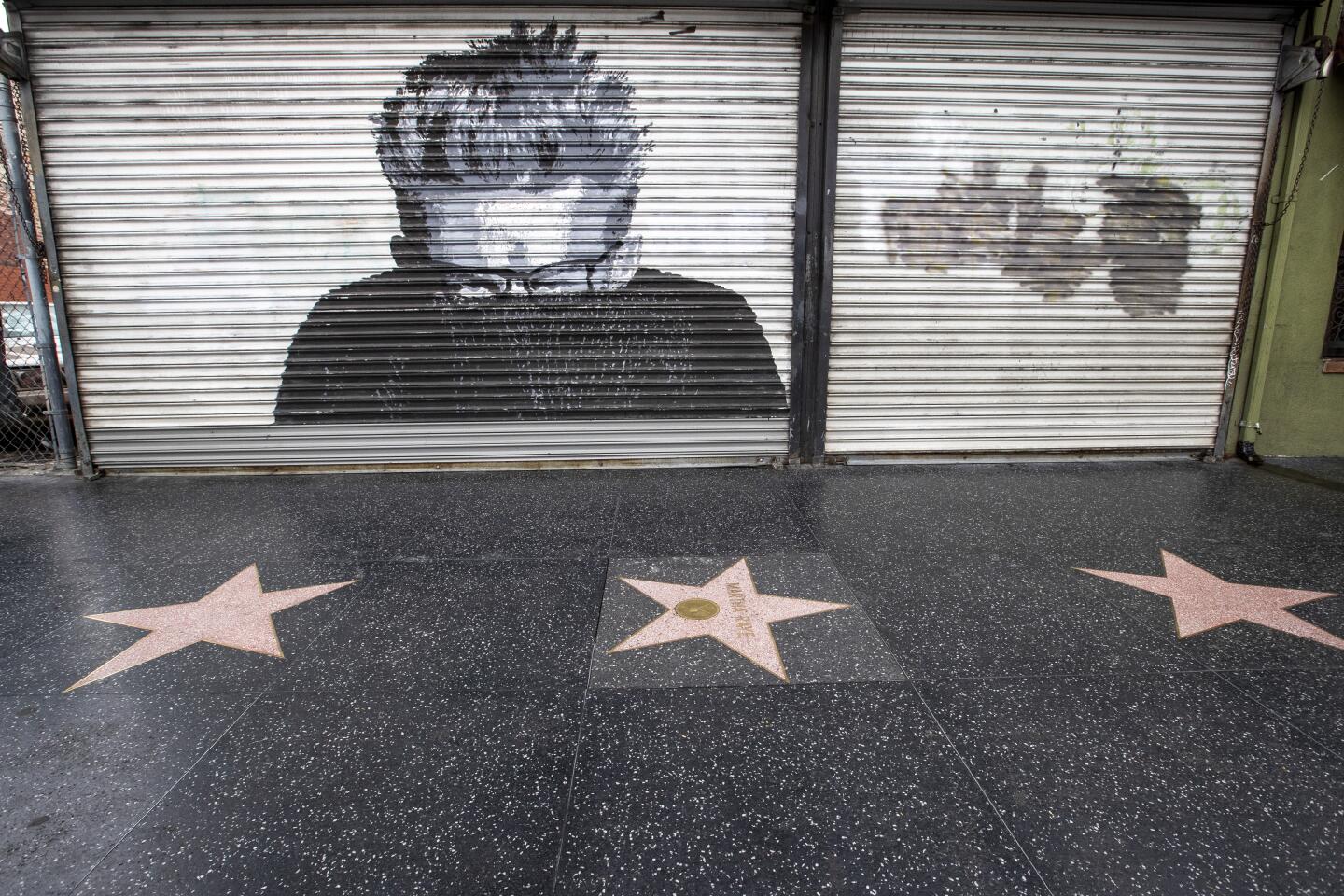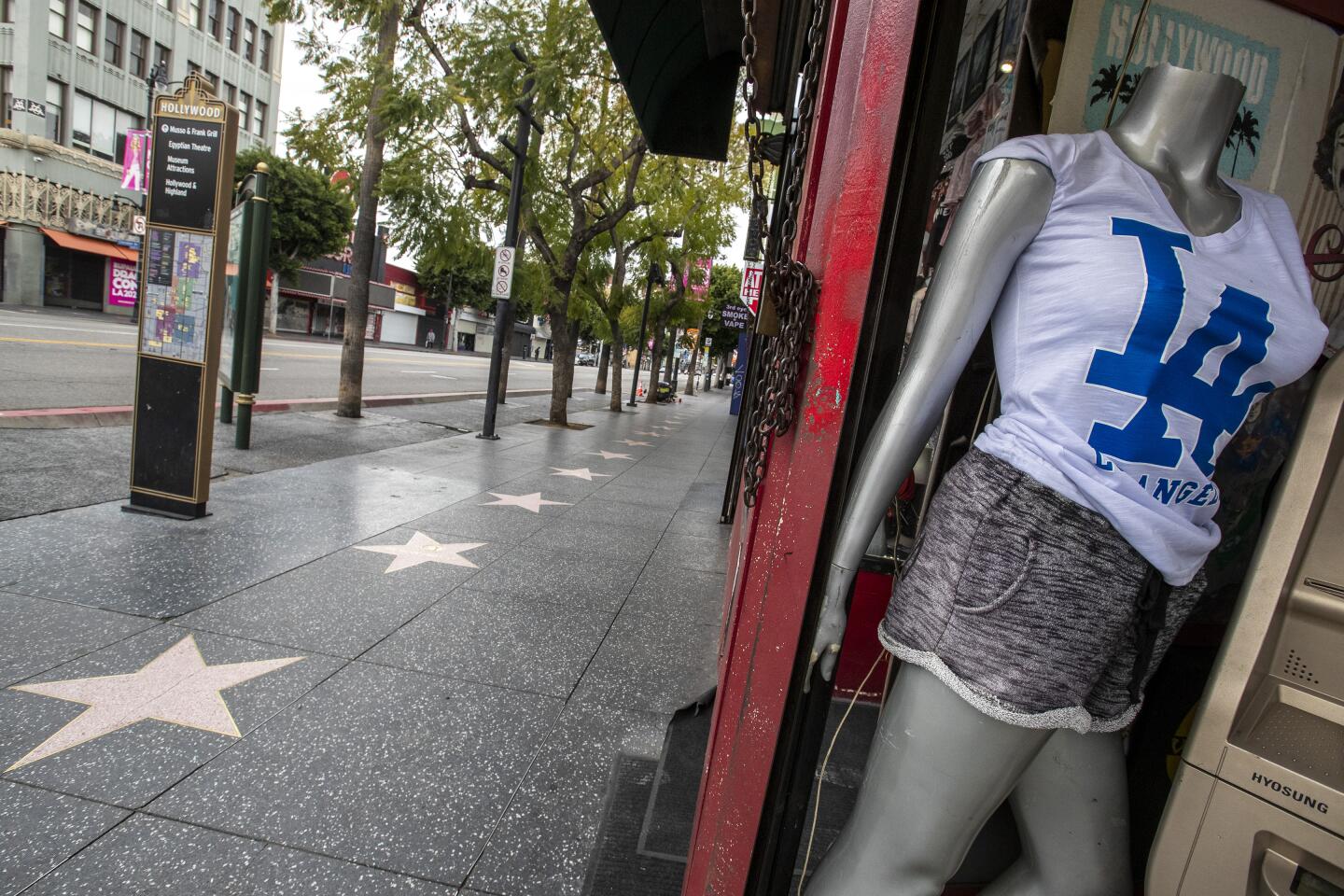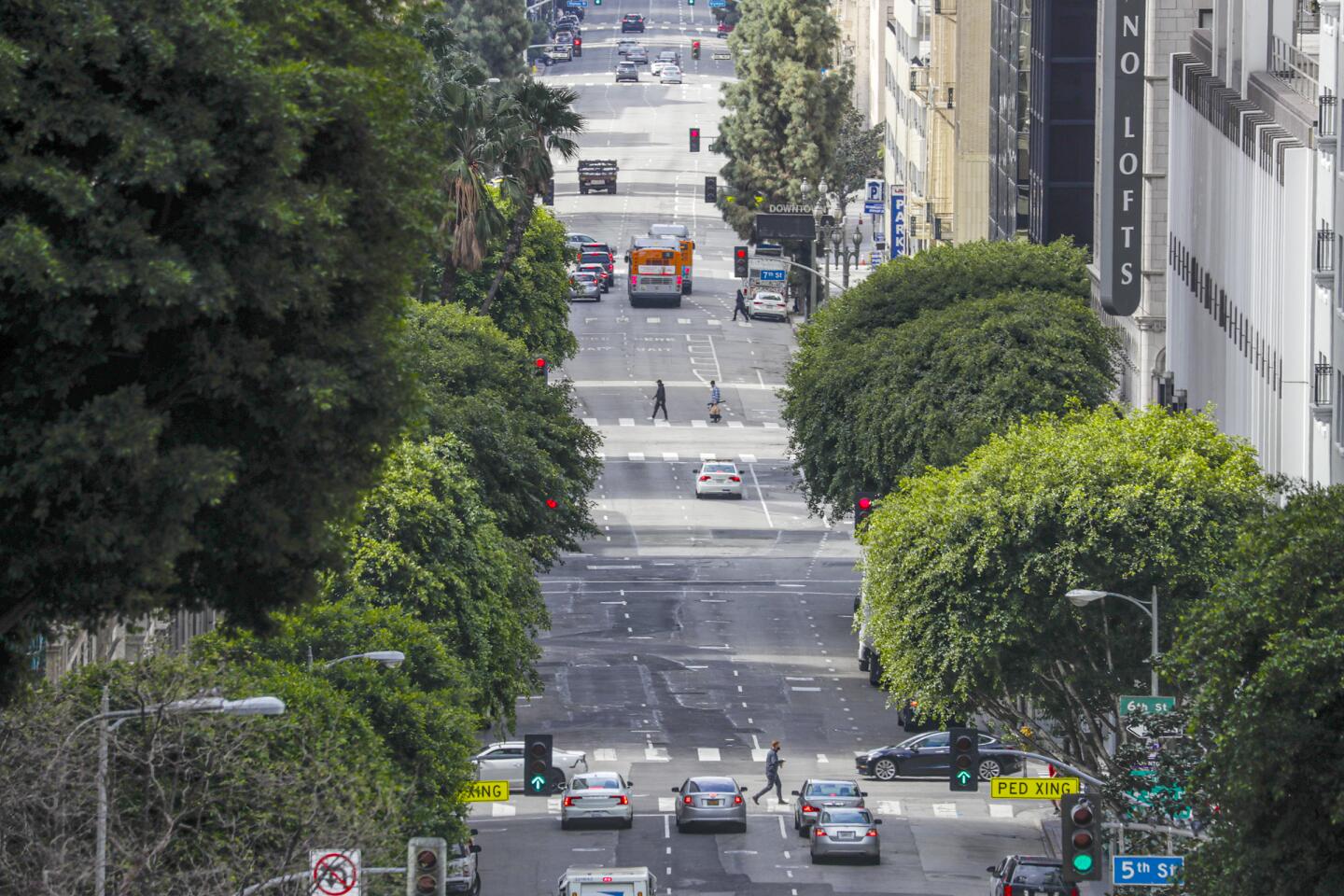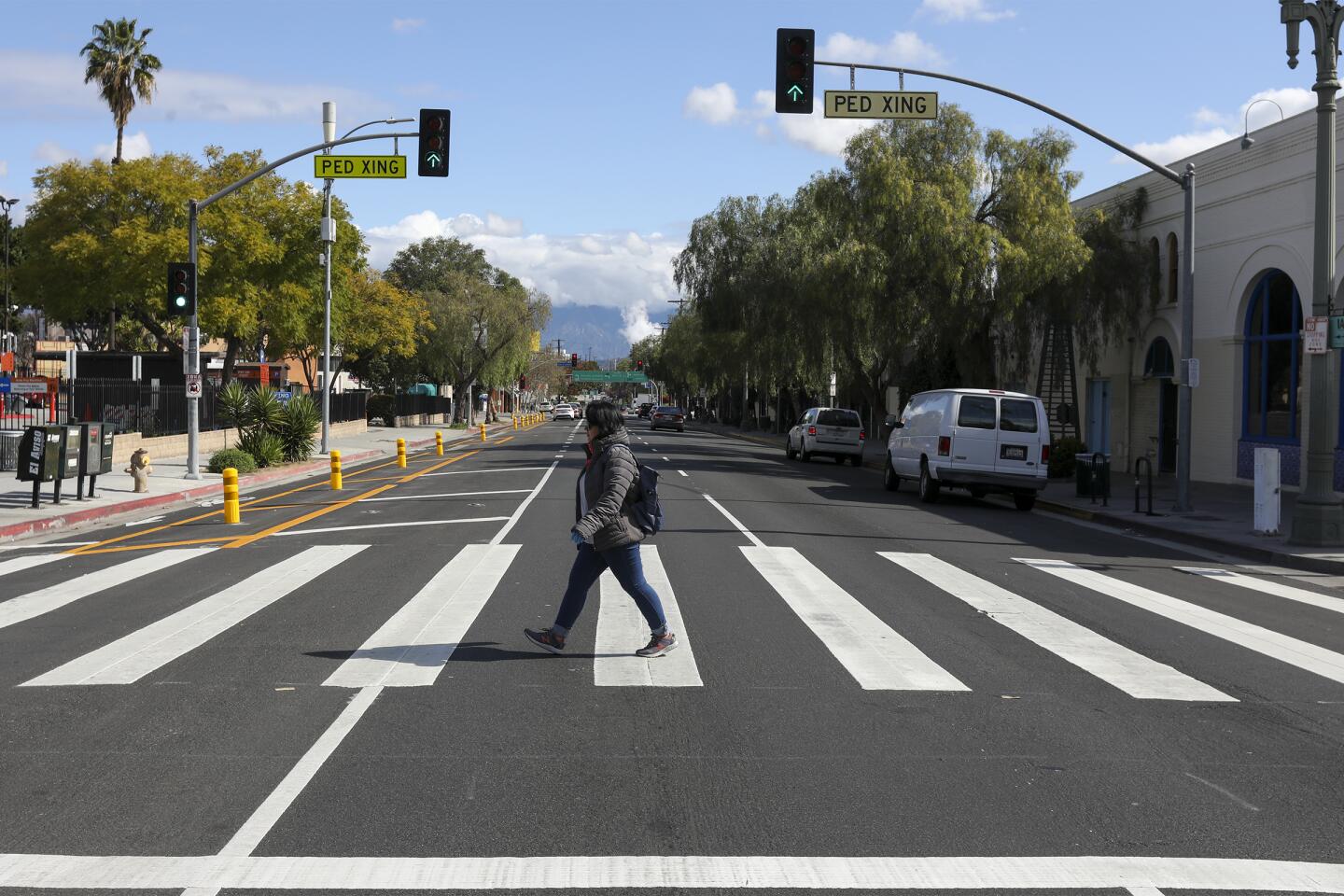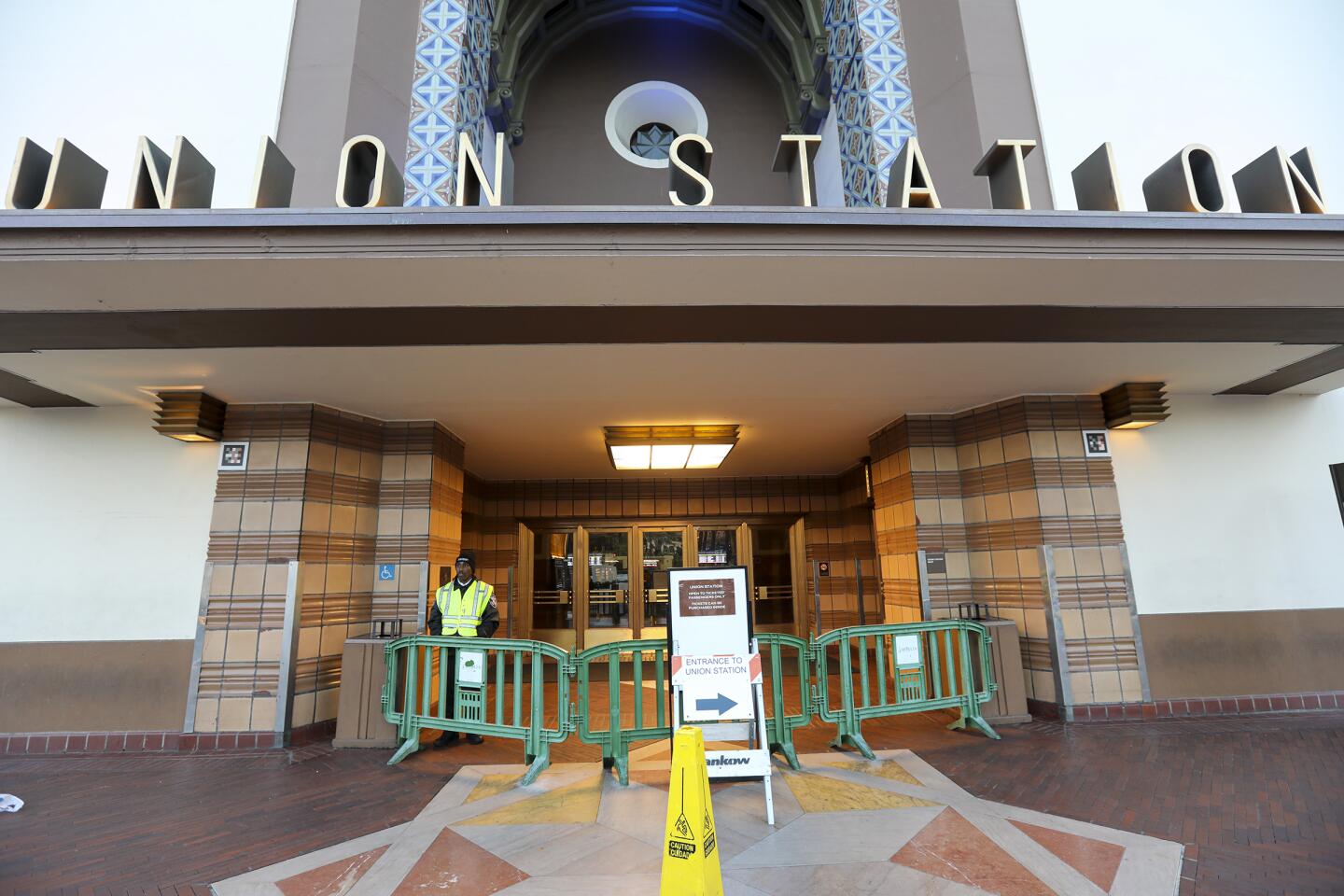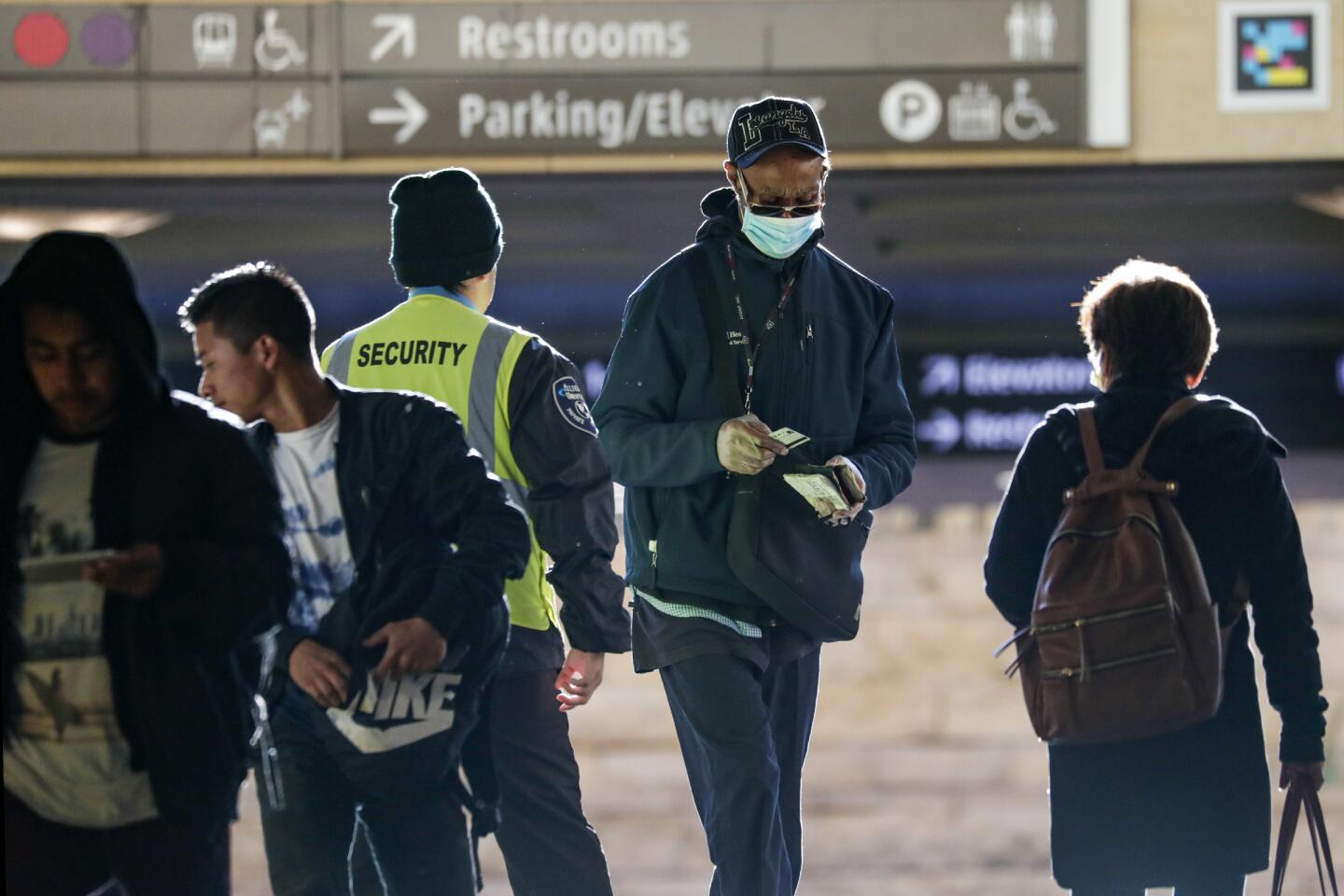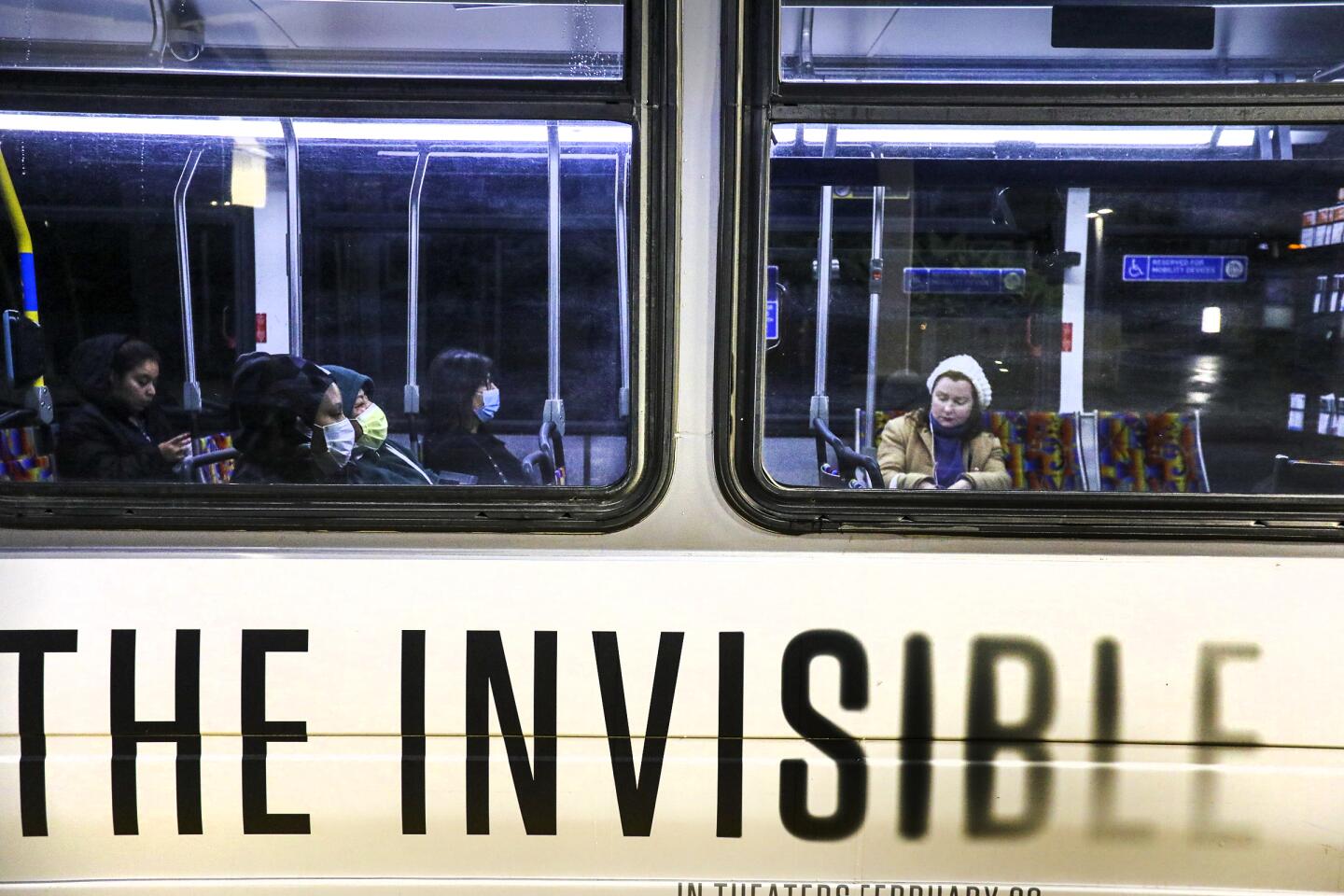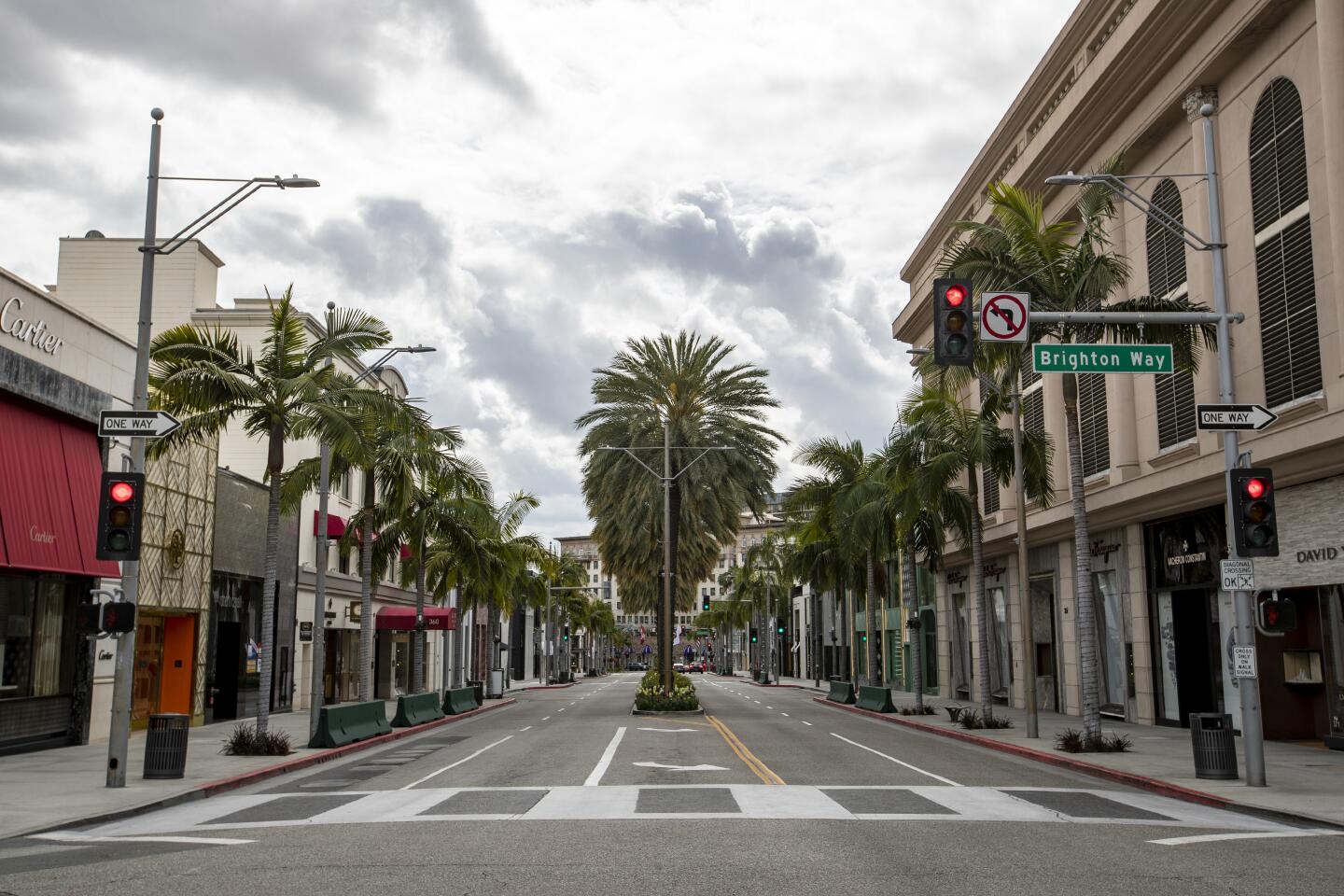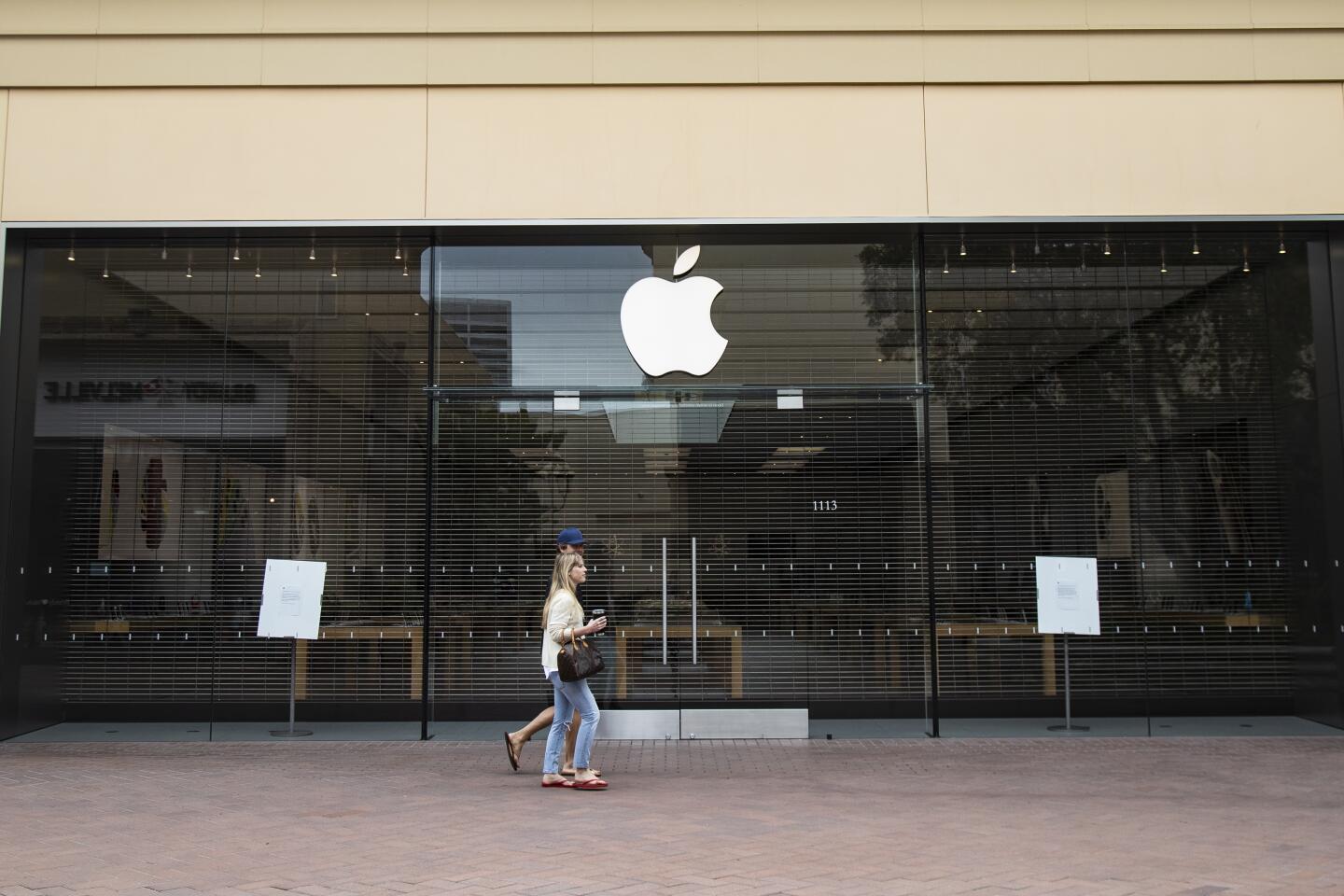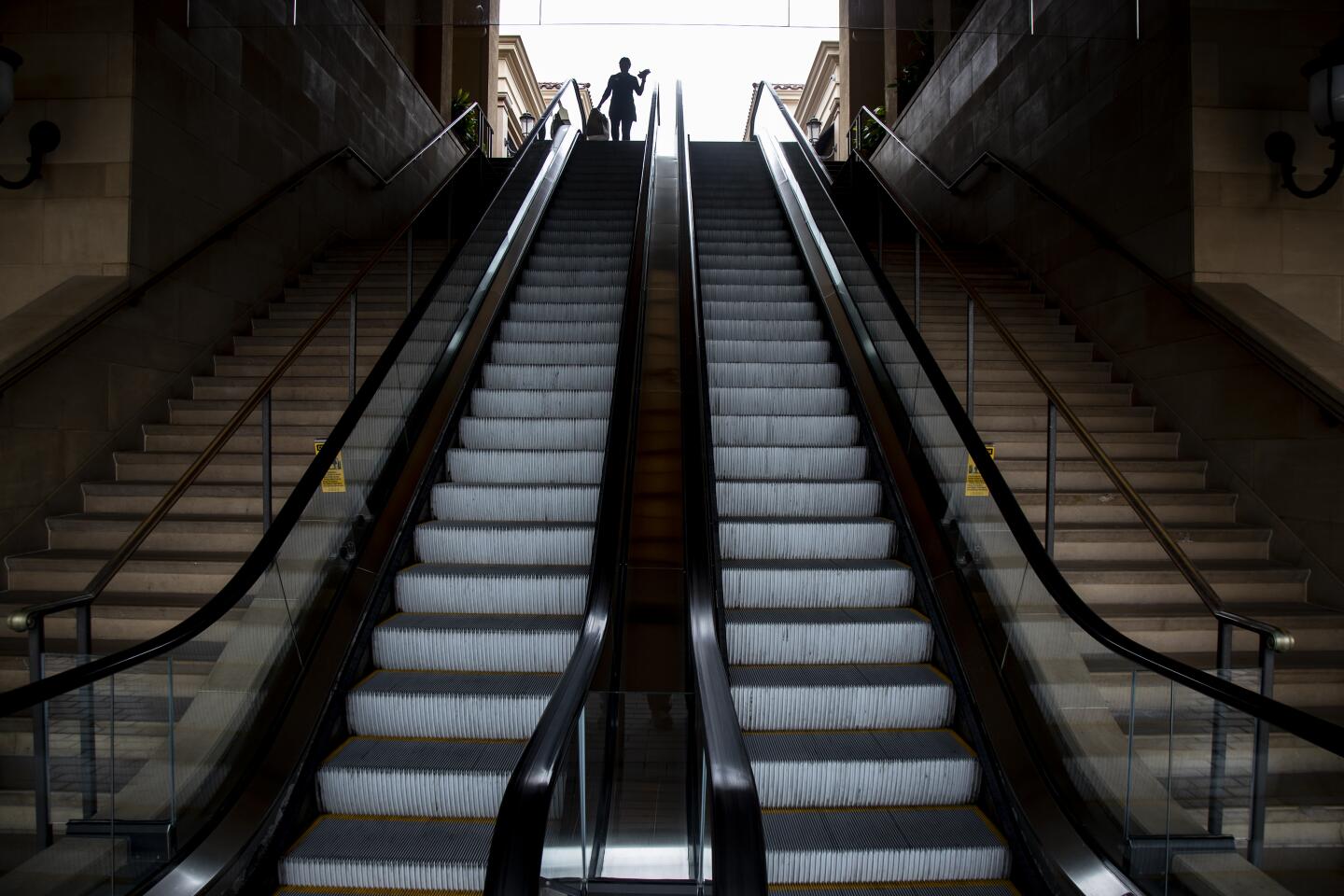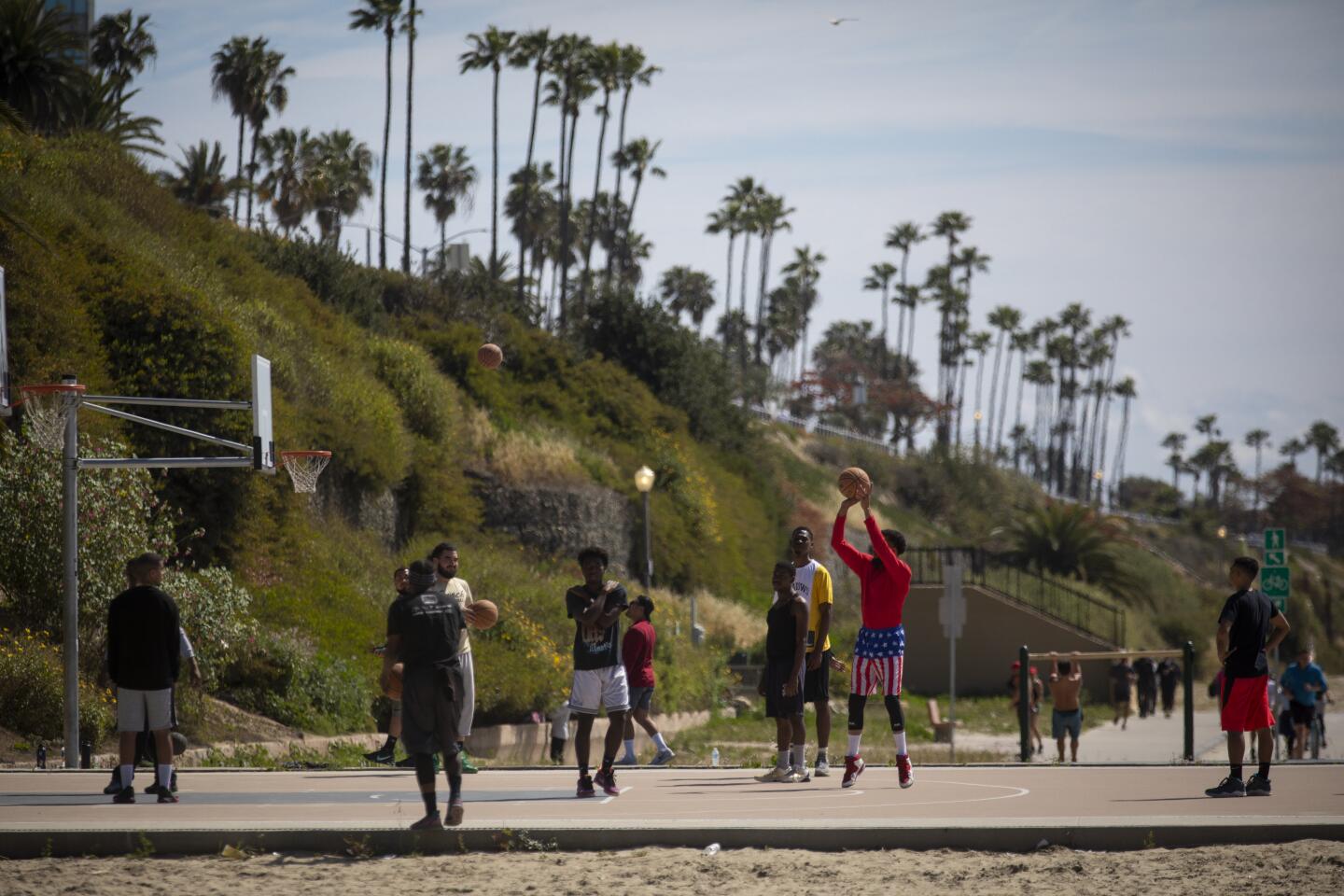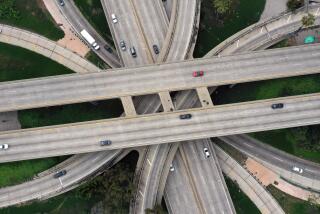A lesson in essential services during the coronavirus outbreak: Groceries, yes. Billiards, no.
- Share via
San Jose police Chief Eddie Garcia gave a livestream lesson Friday in what an “essential service” is — and what it isn’t. In the previous 48 hours, he said, his officers had discovered 55 violations, most by businesses that kept their doors open when they should have been closed to help stop the spread of the coronavirus.
The offenders included flower shops and gyms, a video game store, a flea market, a car wash, a gun store, eight smoke shops — and a billiards hall.
“A billiards hall? Are you kidding me?” Garcia asked, visibly frustrated during the Friday morning news conference. “I mean, I don’t know how a billiards hall thought they could be open during this time. Education is going to turn to enforcement very soon.”
It was almost all quiet on the western front Friday, as Californians navigated Day One of an Oregon-to-Mexico stay-at-home order issued Thursday by Gov. Gavin Newsom. Ever in the vanguard, for better or worse, the Golden State was the first in the country to shut down because of novel coronavirus. Northern California municipalities such as San Jose and San Francisco beat California to it, issuing shut-down orders even earlier in the week.
Traffic was pandemic light. Hiking trails were filled Friday with cabin fever sufferers who stayed the requisite six feet apart and smiled a lot more than normal, grateful to be anywhere but home. The city of El Segundo blocked off parking spots in front of local restaurants, where sit-down service is prohibited, and posted cheerful “Gundo To Go” signs. Masks and latex gloves were the garb of the day for those who ventured out as the global pandemic intensified. Right here.
On Thursday, Newsom ordered all 40 million Californians to stay home, to practice social distancing when they do go out and only to leave for a very proscribed number of reasons. Only “essential services” could remain open. There was some confusion over how bad the pandemic could hit the state, how long the order would last and what is essential to life in the 21st century.
But the hope was clear, even as many wondered how they’ll pay the bills if they are prohibited from working or if business slows to a trickle: If people stay home, the spread of the virus might slow, disease and death might be avoided and hospitals might be able to cope with a manageable surge of patients.
At Los Angeles International Airport at 10:30 a.m., there were twice as many workers as there were travelers at the Air Canada counter in Terminal 6. The LAXit lot looked all but closed. The four zones where travelers wait for Uber and Lyft rides had a total of three cars at 11:15 a.m. There were 13 taxis. And the travelers? Forget about it.
“The only way we survive is airport, and it’s dead and it’s getting worse,” said Saeed Abdulle, a taxi driver from Buena Park, as he fretted with two fellow drivers. “Last week we might get four trips a day. This week, we didn’t even get one trip yet.”
Before the coronavirus hit, taxis were hurting because of ride-hail drivers. But they averaged a dozen rides a day, Abdulle said. Shutting down much of California “is good for safety,” he said. “But it’s a matter of paying our bills and surviving.”
Shopping malls are now shuttered under state and local order. At Del Amo Fashion Center, Chaz Manzanares and Andrew Luna chatted beneath gray skies in the nearly empty parking lot. Their voices carried through the vast, empty acreage, which usually has valet parking and idling drivers on the prowl for elusive parking spaces.
Manzanares works as a restaurant server in the mall, as does Luna’s girlfriend. The Torrance shopping center, one of the largest in the country, closed Wednesday night. Restaurants and eateries doing takeout and delivery could stay open, as Manzanares’ restaurant was. But many had closed. No shoppers, no business.
“It’s what needs to be done,” Manzanares, 32, of Carson, said of the closures. “I understand. If everyone follows the rules and stays in their house, the hospitals can do their thing. The main thing I’m stressed about is, how are we going to get paid? It’s scary.”
Manzanares said he can’t help thinking about his two elderly neighbors, a man and wife, who wave and say hello from their porch every day. The couple takes daily drives in a beat-up old car. This week, he saw them sitting there, holding empty grocery bags, wondering if they should go out.
Luna, 25, of Gardena, has a baby girl on the way. He built the crib Thursday night.
“I’m having a baby in a month,” he said. “Like, what kind of world am I bringing her into?”
Luna said his girlfriend is strong, and if she’s scared, “she hides it well.” They’re trying to keep their spirits up. He works in a chiropractor’s office and is, for now, still working.
As the men chatted, mall employees came walking out the front doors, toting restaurant perishables that would have gone to waste. One woman carried out two giant glass jars of lemons and limes. Another pushed a steel utility cart filled with food to her car. Manzanares and Luna grabbed bottles of wine.
Good wine, Manzanares said, laughing, a sliver of joy on an otherwise dark day.
Even before the statewide shut down — prompted by California’s more than 1,000 confirmed COVID-19 cases and double-digit death toll — daily ridership on the state’s busiest transit system had fallen by more than half.
As a result, the Los Angeles County Metropolitan Transportation Authority announced Friday that it will cut service by 15% to 20% immediately. That means buses and trains will run on a schedule that is a blend between regular weekday service and less-frequent weekend service, Chief Executive Phil Washington said.
“Let me make it abundantly clear; we have no plans to shut down our transportation system,” Washington said, adding that buses and trains are a “lifeline” for people who still need to go to work, run errands and care for loved ones. “We have of course never been through something like this — it’s unprecedented in our lifetime.”
The majority of the money that pays for Metro’s operating expenses comes from sales tax revenue rather than passenger fares. The agency is anticipating a “massive hit” to its budget as more people stay home and only buy necessities like groceries, but agency officials don’t know the extent of the decline yet, Washington said.
Tres Estrellas de Oro, which runs bus lines from Anaheim to Tijuana, has also had to cut back service because the pandemic clobbered business. But on Friday, the phone kept ringing at the company’s booth inside Anaheim’s ARTIC transportation center.
President Trump had just announced that the United States and Mexico have agreed to restrict all nonessential travel across their shared border starting on Saturday. And Tres Estrellas was looking at one last boom in business.
Booking agent Maria Ramos calmly told frantic customers that the company would continue service “until the government tells us to stop.” In between calls, she gossiped with Maggie, a 37-year-old Orange County native who didn’t want to give her last name. Maggie lives in Tijuana with her deported husband and planned to stay with him for the duration of the closure.
She thought threats of the coronavirus were “puro chisme” [a bunch of gossip] but noted Tijuana was far less crowded now because of Californians sheltering in place.
“You can actually breathe now down there,” Maggie said. “I tell people up here, ‘Over here is la corona — don’t come!’ ”
At Griffith Park Friday morning, dog walkers and exercisers were out in force. People did lunges on the grass and pushups on the picnic tables. A sign flashed “observatory closed until further notice.”
Robert Dolan, a 64-year-old Los Feliz resident, said he’d been cooped up at home for nearly a week. But on Friday, he decided to resume his regular speed walking routine.
“I was feeling stuck in the house because of the coronavirus and all that,” he said. “Finally said today I need to get out of here, because it’s driving me crazy.”
He sat on a stone ledge and watched a robin land on a tree. He listened to the flow of water near his feet.
“It’s better than it usually is,” he said, “because I’ve actually stopped and looked.”
In the Bay Area, it was Day Four of the new world of “shelter in place.”
City and county parks were busy with joggers, hikers and dog walkers. Everybody seemed to heed the six-foot social distance requirement. Several visibly held their breath as they passed fellow walkers.
The dogs seemed delighted to be strolling mid-day, with their now at-home owners, along the sidewalks of Menlo Park’s Flood Triangle neighborhood, and Palo Alto’s University Avenue, which is now nearly devoid of its usual bustling crowds.
Their tails are held high. There’s a bounce in their gait. The virus may be a dog’s best friend. At least for now.
Times staff writers Laura Nelson, Rong-Gong Lin II, Susanne Rust, Gale Holland and Alex Wigglesworth contributed to this report.
More to Read
Sign up for Essential California
The most important California stories and recommendations in your inbox every morning.
You may occasionally receive promotional content from the Los Angeles Times.
